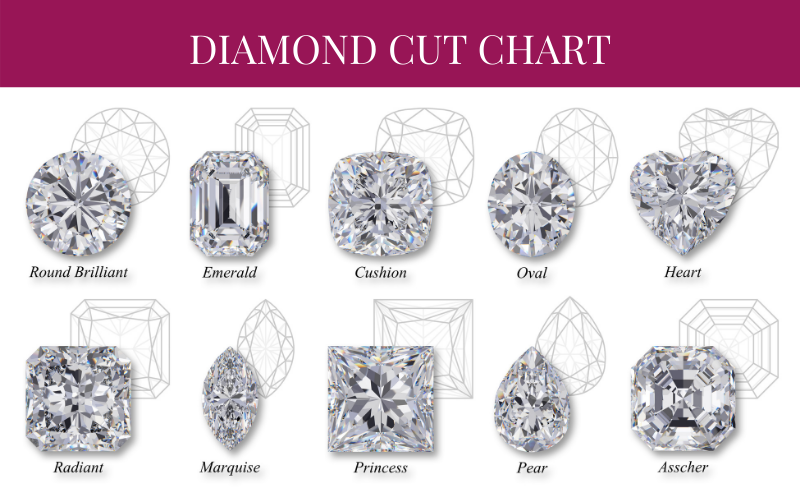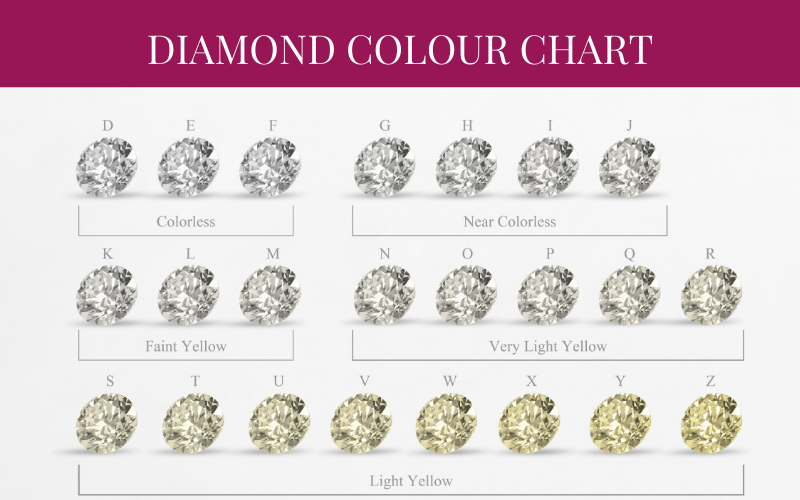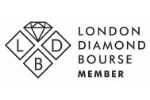HOW TO BUY A DIAMOND RING
This is a guide to help you understand how to buy a ring, where to buy a ring and finally, how to ensure you are not overcharged for your purchase
No matter the reason you are looking to buy a diamond ring, whether it be for an engagement, a gift for a loved one, or a gift to yourself, it's a big decision to make. There are so many things to think about and you want to ensure you make the right choice. Most of us will specify the budget and then jump online to research the 'best' you can get for that amount. Here is our diamond ring guide to help make sure your choice is the right one. If you are still unsure after reading our guide feel free to get in touch.
The 4 C's we often hear about
Diamond Clarity
The clarity of a diamond is how free it is from any blemishes or inclusions. These imperfections on the diamond can impact the way that light passes through the jewel, dulling its sparkle and taking away from the quality of the cut. This means that you may pay less for a larger diamond which has lower clarity than a smaller diamond that has fewer blemishes. However...! Most inclusions cannot be seen by the naked eye, but they still have an impact on the price of the ring. This is a very important piece of information
The diamond clarity scale has six categories to determine its quality. These are as follows:
- Flawless (FL) - No inclusions or blemishes visible up to 10x magnification
- Internally Flawless (IF) - No inclusions visible up to 10x magnification
- Very, Very Slightly Included (VVSI and VVS2) - Inclusions so small they are nearly impossible to be seen under 10x magnification by a skilled grader
- Very Slightly Included (VS1 and VS2) - Inclusions that count as very minor and are so slight that it's hard to see them under 10x magnification
- Slightly Included (SI1 and SI2) - Noticeable inclusions under 10x magnification
- Included (I1, I2 and I3) - These inclusions can affect the brilliance and transparency of the diamond and can be seen obviously under a 10x magnification.
Diamond Carat - A diamond's carat refers to the weight of a diamond. Often confused with size, but you would be right in thinking, the bigger the carat, the bigger the diamond.
Diamond Cut - Diamond cut can refer to the shape of the diamond as well as the craftsmanship behind it. A diamond begins as a rough crystal before being meticulously cut to the proportions, angles and shape that best allow it to shine and reflect the light. If you want to know more about the diamond cuts, feel free to give us a call. Below is a list the most common cuts used in engagement rings.

Diamond Colour - With a diamond, you want it to be colourless and almost clear. If it contains a noticeable tint, this means the diamond is not as good a quality and can distract from the sparkle of the diamond itself.

How to save money when buying a diamond ring
If you are looking to save money when buying your ring, there are a few ways you can do so without purchasing a diamond which looks lower in quality. Research eye-clean diamonds; these are diamonds of a lesser clarity, but to the untrained eye look clean. This can save you thousands in comparison to a very lightly included (VSI) or a very very slightly included (VVSI) diamond. Inclusions can also appear in areas that aren’t visible when looked at with the human eye and can only be seen when viewed using a jeweller's loop. While this tip will save you money, you'll still have a ring that looks stunning.
To Clarify, the overall price depends on how technically perfect a stone do you want it to be.
Are you willing to go a few tiny notches (most of the time they are not visible to the human eye without a microscope) down from the perfect colourless diamond grade in order to have a slightly larger stone? That's what you really need to work out.
- The larger the stone, the more expensive.
- The better the colour grading ie. D rather than G, the more expensive.
- The 'cleaner' the stone, again, the more expensive.
Top Tip: You can get a high-quality stone with a visible blemish at the side or corner of the diamond. These can sometimes be hidden under the claw of the ring and will no longer be visible. This tip can save your thousands on your purchase.
Top Tip: If you are worried about the costs vs lowing the quality, ask your diamond jeweller to see the diamonds against loosely set/placed in an engagement ring. Diamonds look different when encased inside the precious metal claws.
Where to buy your Diamond Ring
When you are looking into how to buy a diamond ring, ensuring you know how to find a legitimate jeweller is essential. The last thing you want is to spend thousands on a beautiful and expensive ring only to find out it is worth much less, or the quality is not what you were promised. Once you know all you need to know, it really is worth popping into a few shops within the Hatton Garden Diamond district to give you the confidence and reassurance before buying your ring.
Reviews
The first thing you should look into when finding a jeweller for your diamond ring is their reviews. No matter how cheap the prices are, if lots of other people have had a bad experience, chances are that you will too. The Diamond Ring Company is a perfect example of a Diamond Jeweller with great legitimate feedback.
- How many reviews do they have
- How legitimate are the reviews
The price for a ring
You be drawn to a certain cut or style in one jeweller's shop that is out of your price range but you're then able to find the same ring and stone specification somewhere else. Most rings come in similar designs, and even bespoke rings are designed in a common way. Be sure to do your research and look around to find a ring that fits both your vision and your budget.
Top Tip: Rings bought from a highstreet jeweller can cost up to 70% more for the exact same product you can get in Hatton Garden.
Be very careful - we would strongly advise calling a few jewellers once you know what you want to compare prices.
Ring Returns
Most Jewellers should offer at least a 30-day money-back guarantee (this might not apply to bespoke rings). Check the jeweller's policies. If you purchase a ring and find it doesn’t fit the recipient or that they don’t like it, you want to be sure that the jeweller offers free ring re-sizing or some type of money-back guarantee. Free Ring Resize
What is a diamond certification and why is it important?
When buying a diamond, you will be presented with a diamond certificate which formally states the characteristics that make up that particular diamond. It will outline the weight, colour, clarity, cut and carat as well as any other comments and details. It serves as an assurance that your diamond is of the quality you were told when purchasing and acts as proof of the identity of the diamond. There are a few different recognised certifications for diamonds, which include GIA, IGI and WGI.
What makes Carriage Diamonds different to other diamond jewellers?
Here at Carriage Diamonds, our experts Mike and Alex have over 40 years’ collective experience in designing and creating stunning, one-of-a-kind diamond engagement rings.
We offer:
- 30 Day money-back guarantee
- Finance is available
- 100% Certified ethical diamonds
- Most competitive price in Hatton Garden and online
- You can visit us in-store or arrange a video call
- Free ring resizing
- Bespoke designs available
We only sell conflict-free certified diamonds mainly use the two diamond certifiers below.
GIA - Established in 1931, GIA is the world’s foremost authority on diamonds, coloured stones, and pearls.
WGI - World Gemological Institute is a global company that has been offering expert evaluations for over 30 years.


